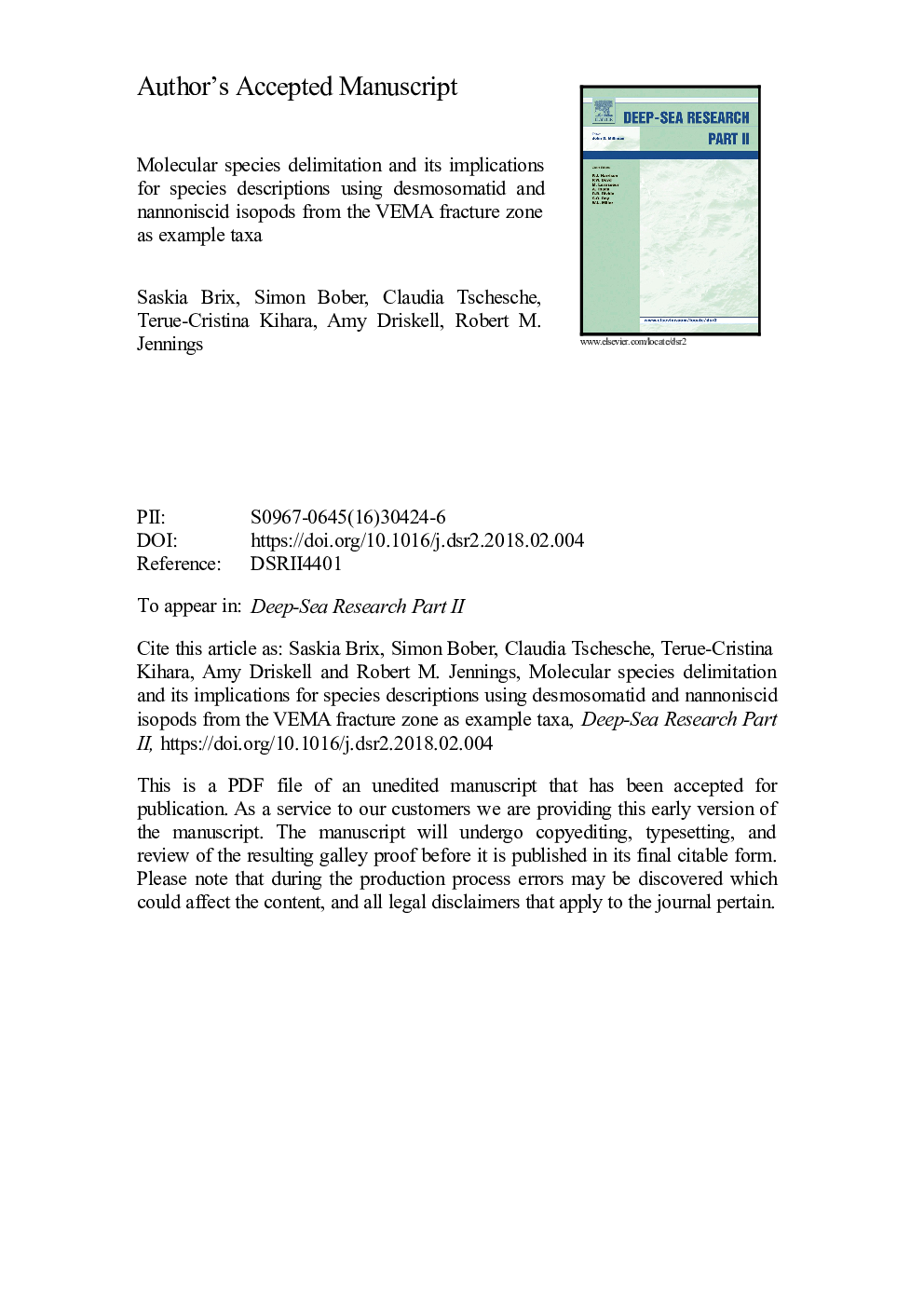| Article ID | Journal | Published Year | Pages | File Type |
|---|---|---|---|---|
| 8884466 | Deep Sea Research Part II: Topical Studies in Oceanography | 2018 | 56 Pages |
Abstract
We found 72 species for COI and 45 for 16â¯S by species delimitation among 186 (from 195 extracted) desmosomatid (144) and nannoniscid (42) sequenced specimens of a total of >â¯400 specimens for both families. Multiple “discovery”-type species delimitation methods were used, so that consistency across methods could be assessed: The ABGD analysis detected a barcode gap of 3-6% for COI and 4-6% for 16â¯S, in the whole dataset. Most putative species have a horizontally limited distribution along the Vema fracture zone, although the details depend in part on the interpretation of species delimitation analyses. Putative species were mostly restricted to the eastern or western Vema fracture zone, with only eight crossing the complete Vema fracture zone. Our data suggest that even robustly-sampled species exhibited small ranges; the range estimates calculable from present data were around 500â¯km, and three were on the order of 1000-2500â¯km. We chose an abundant, but geographically restricted species (Eugerdella egoni Tschesche and Brix sp. nov.) collected at a single site in the Vema transform fault, and two species (Prochelator barnacki Bober and Brix sp. nov. and Whoia sockei Brix and Kihara sp. nov.) with a broad, but disjunct distribution in the Vema fracture zone for taxonomic description.
Related Topics
Physical Sciences and Engineering
Earth and Planetary Sciences
Geology
Authors
Saskia Brix, Simon Bober, Claudia Tschesche, Terue-Cristina Kihara, Amy Driskell, Robert M. Jennings,
